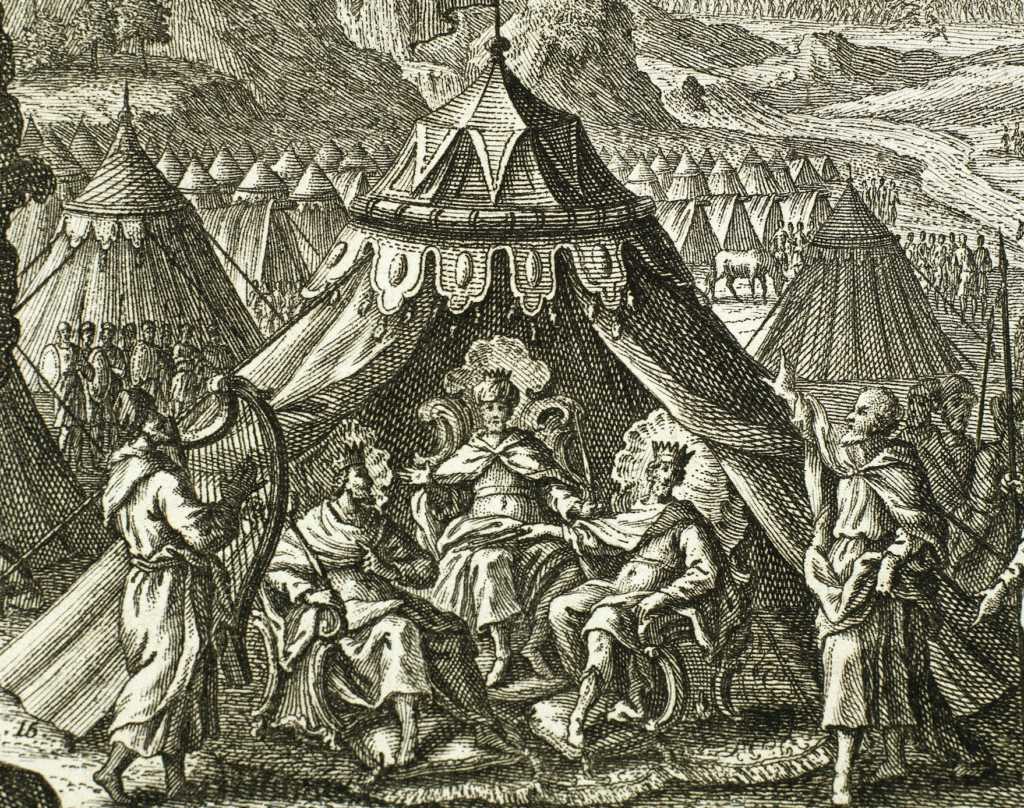Researchers believe that the recent discovery of 3,000-year-old donkey dung could actually help corroborate the Old Testament account of ancient history.
Archaeologists’ discovery of the feces in an Israeli area known as Slaves’ Hill backs the idea that there was potentially a mining complex in the area that dates back to King Solomon. The dung was discovered after Erez Ben-Yosef, an archeologist with the University of Tel Aviv, started excavating the area back in 2013, National Geographic reported.
READ: ‘I Answer Only to God’: Hollywood Icon’s Passionate Message About Faith and Prayer
At first, Ben-Yosef said researchers assumed the fecal matter was from more recent decades, but they were in for a big surprise after they began to carbon date it: They found out that the manure — and area it was discovered in — is actually much older than previously assumed, dating all the way back to Kings David and Solomon.
“We thought maybe some nomads had camped there with their goats a few decades ago,” the archaeologist told the outlet. “But the dates came back from the lab, and they confirmed we were talking about donkeys and other livestock from the 10th century B.C. It was hard to believe.”
Manure preserved for millennia is adding fresh fuel to a debate about the source of king Solomon's legendary wealth https://t.co/JTipDhsqFR
— National Geographic (@NatGeo) April 4, 2017
Now, they believe that the site was even more bustling in the 10th century B.C. during the reigns of King David and his son King Solomon than it was later in the New Kingdom of Egypt in the 13th and 12th centuries B.C., relying on organic material and textiles found at the site to make that determination, according to National Geographic.
So, what does all this mean?
Considering the Bible’s depiction of Solomon as being quite wealthy and lavish, presiding over a gold and bronze-laden temple, experts believe that industrial metal was required for these purposes. That metal would have, thus, needed to be produced somewhere in the region.
In a recent paper that Ben-Yosef co-wrote for the “Journal of Archaeological Science” he discussed how some of the findings surrounding the donkeys could help shed light on the possible industrial activity at the site. The abstract reads, in part:
The donkeys were fed with grape pomace and hay (rather than straw) that originated from the Mediterranean regions, > 100 km to the northeast (Edom) and 200 km to the north (Philistia/Judea). This food reflects special treatment and care, in accordance with the key role of the donkeys in the success of copper production and trade in a logistically challenging region. Furthermore, the excavations revealed a deliberate piling of the dung against the inner face of the site’s wall, most probably in order to use it as fuel in the copper smelting process (the initial heating of the furnaces).
There’s still much work to be done and no definitive tie to King Solomon has been found as of yet at the site.
But the findings do call into question some critics’ attempts to frame the Bible as misrepresenting the power and prestige of David and Solomon, with these individuals believing they were instead smaller-scale leaders. Here’s what the Bible has to say about Solomon’s wealth in 2 Chronicles 9, though:
Every year King Solomon received over twenty-five tons of gold, in addition to the taxes paid by the traders and merchants. The kings of Arabia and the governors of the Israelite districts also brought him silver and gold. Solomon made two hundred large shields, each of which was covered with about fifteen pounds of beaten gold, and three hundred smaller shields, each covered with about eight pounds of beaten gold. He had them all placed in the Hall of the Forest of Lebanon.
The king also had a large throne made. Part of it was covered with ivory and the rest of it was covered with pure gold. Six steps led up to the throne, and there was a footstool attached to it, covered with gold. There were arms on each side of the throne, and the figure of a lion stood at each side. Twelve figures of lions were on the steps, one at either end of each step. No throne like this had ever existed in any other kingdom.
All of King Solomon’s drinking cups were made of gold, and all the utensils in the Hall of the Forest of Lebanon were of pure gold. Silver was not considered valuable in Solomon’s day. He had a fleet of ocean-going ships sailing with King Hiram’s fleet. Every three years his fleet would return, bringing gold, silver, ivory, apes, and monkeys.
Clearly, there’s a disconnect between some critics and the biblical account, with some of these same skeptics also taking aim at the Bible’s chronology, though the dung finding could help corroborate the scriptures. We’ll have to wait and see how it all unfolds.
Read more about the discovery here.
(H/T: National Geographic)
—
Other Must-Read Stories:
— WATCH: This Kid Memorized 800 Bible Verses in 90 Days
— How a Massive Prayer Campaign Has Reportedly Saved 13,000 Unborn Babies’ Lives
— ‘It Was Very Scary’: Heart-Pumping Video Shows Brave Subway Hero Rescuing a Man on the Tracks
— ‘I Answer Only to God’: Hollywood Icon’s Passionate Message About Faith and Prayer



